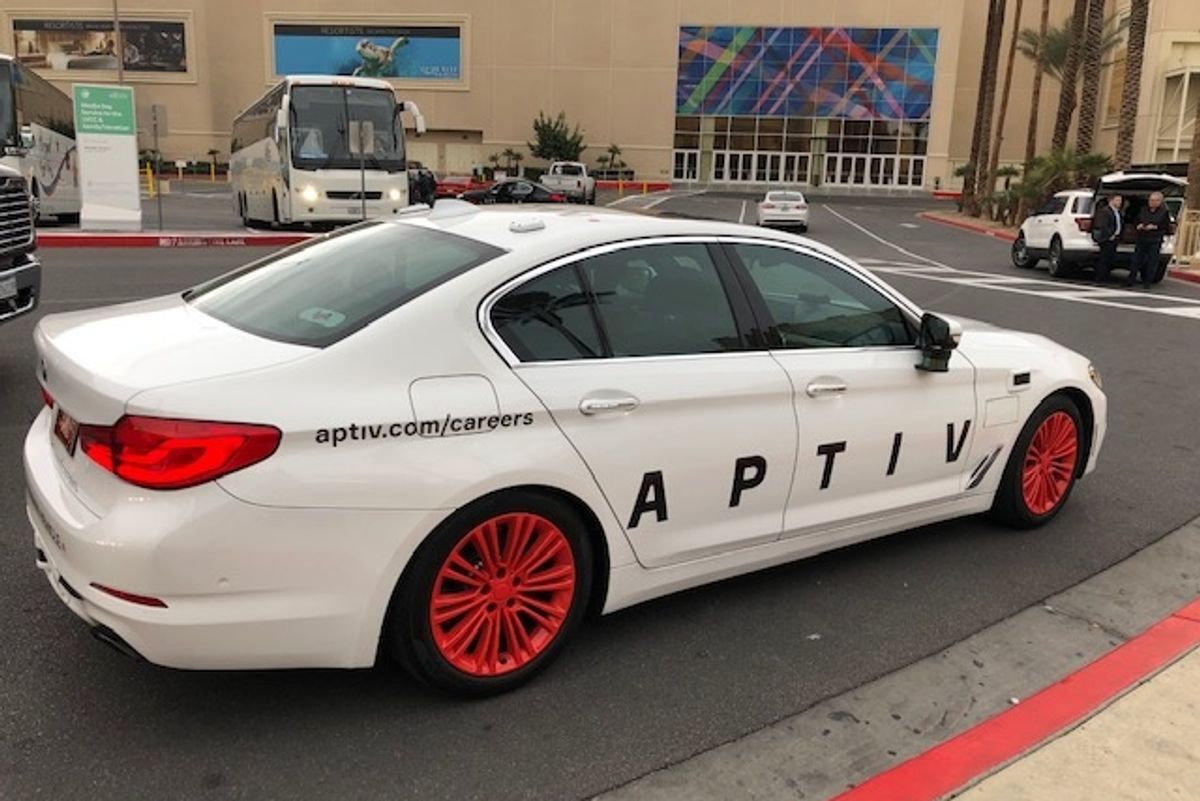
GearBrain
Lyft and Aptiv's self-driving car picked us up in Vegas
Like driving with your grandfather, which is the entire point

Like driving with your grandfather, which is the entire point
Since May 2018, Lyft and Aptiv have partnered to give self-driving rides across the Las Vegas strip randomly to those requesting a pickup through the ride share app. At any time, 30 of the white and black cars can be dispatched, pulling up with two people in the front seats acting as safety monitor and backup driver. We finally got one at 7:30 am this morning — a white BMW, that picked us up at the MGM Grand for a quick drive to the Mandalay Bay.
The car, while self-driving on public roads like the Las Vegas Strip, is driven manually on hotel properties. That meant as we swung out of the back ride share lot from the MGM Grand, and into a left turn on to South Las Vegas Blvd the car was in manual mode, with the driver's hands at 10 and 2, and her feet on the pedals.

Only once we turned onto the main road did the car flip into autonomous mode, a slow gentle glide. That's by design — an experience that is not meant for the car to road rage itself down the street, but instead move cautiously, engaging carefully with vehicles, people and traffic lights it met on the 1.5-mile drive.
Aptiv and Lyft launched the service at CES 2018 for a trial, before putting the autonomous cars out more full-time last spring. By late August, people had taken more than 5,000 self-driving rides, claimed Lyft.
Self-driving cars have certainly stoked fears among people, concerned about 3,000 pounds of metal moving on its own. A fatal accident involving an Uber in Phoenix, Arizona in 2018 fed those worries. But those running self-driving car trials believe the tide is turning. Lyft, in August 2018, said the its riders in these vehicles rated them 4.96 out of 5 stars, with 96 percent saying they would ride again.
During our ride, we could tell when the autonomous mode kicked in, because a screen planted in the center of the dash printed out the mode. We could also see cars on either side of us on the screen, cars turning in front of us when we were stopped at a light, and the light itself — all read by the car's system through lidar, radar, a camera and other tech vision tools.

The BMW itself was fairly clean looking and didn't look like it was studded with beacons and cameras. While a practiced eye spied some of the devices on its exterior, mostly it was the huge "APTIV" written across the side, and the words "self driving vehicle" printed along the bumper, that tipped off that the car was a bit different.
The entire experience took about seven minutes and the ride felt uneventful. At least one of us had hoped for a car that chatted with us, on its own, and drove us, on its own, the presence of two people in the front with screens took a bit of fun from the ride. For the thrill seeker, that's let down. For the self-driving industry, it's a giant win.
GearBrain Compatibility Find Engine
A pioneering recommendation platform where you can research,
discover, buy, and learn how to connect and optimize smart devices.
Join our community! Ask and answer questions about smart devices and save yours in My Gear.
